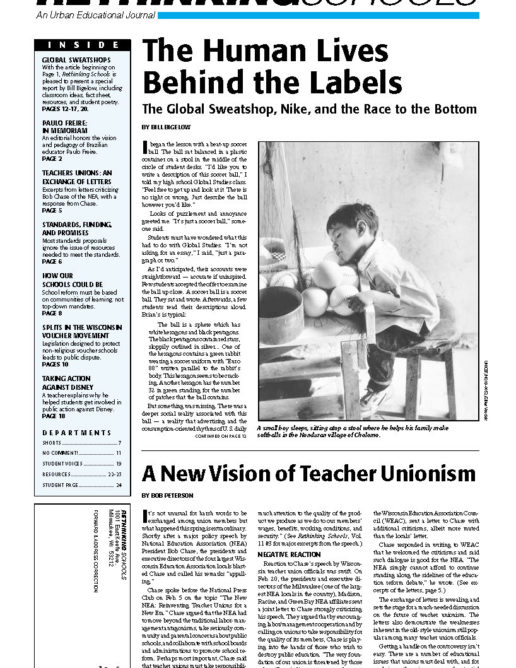Global Sweatshop Handout
This is the handout given to students for the global sweatshop final project.
The project you choose is up to you. The major requirement is that you take your learning about Nike; the “global sweatshop;” child labor; conditions for workers in Indonesia, China, Vietnam, Haiti, etc.; outside the walls of the classroom and into the real world. Some examples:
Write a detailed letter of opinion or inquiry to someone connected with these issues — for example, Phil Knight, Michael Jordan, President Clinton, U.S. labor unions, the Disney Co., the governments of China, Vietnam, or Indonesia, etc. In this letter, you can either make a strong point and back it up with evidence from class and your own research, or you can raise important questions. However, if you choose to raise questions, you still need to indicate lots of information that you know about the issue.
Write an article for the Franklin Post, The Oregonian, or some other journal or newsletter.
Prepare testimony for the Portland School Board, or some other agency or office.
Design a presentation for classes at Franklin or one of our feeder schools (Kellogg, Mt. Tabor, et al.) to teach others about these issues.
Become involved with a group that is trying to make a difference around these issues. Write up your reasons for choosing this group and what you hope to accomplish.
Produce a rap, audio tape, video, or visual display on these issues. (You would also need to accompany this with an essay explaining and defending your point of view.) Write a skit to perform or a story to share.
An original idea that my teacher-brain was too dull to come up with.
Other Considerations:
You may work in a group if required by the nature of your project — for example, presenting to other classes or giving testimony before the school board. But I will need to see evidence that each member of the group has participated.
You must use at least five different sources in your project. At least two of these must be sources you found on your own.
The final draft of your project must demonstrate clear ideas and support, and it needs to be “correct.” No spelling, grammatical, or other errors on the final draft. (People outside of schools are always looking for ways to make students look ignorant; let’s not give them any ammunition.)
Remember to go deep with this. Point out specific conditions that need changing, but also remember to talk about the deeper causes of these problems.

